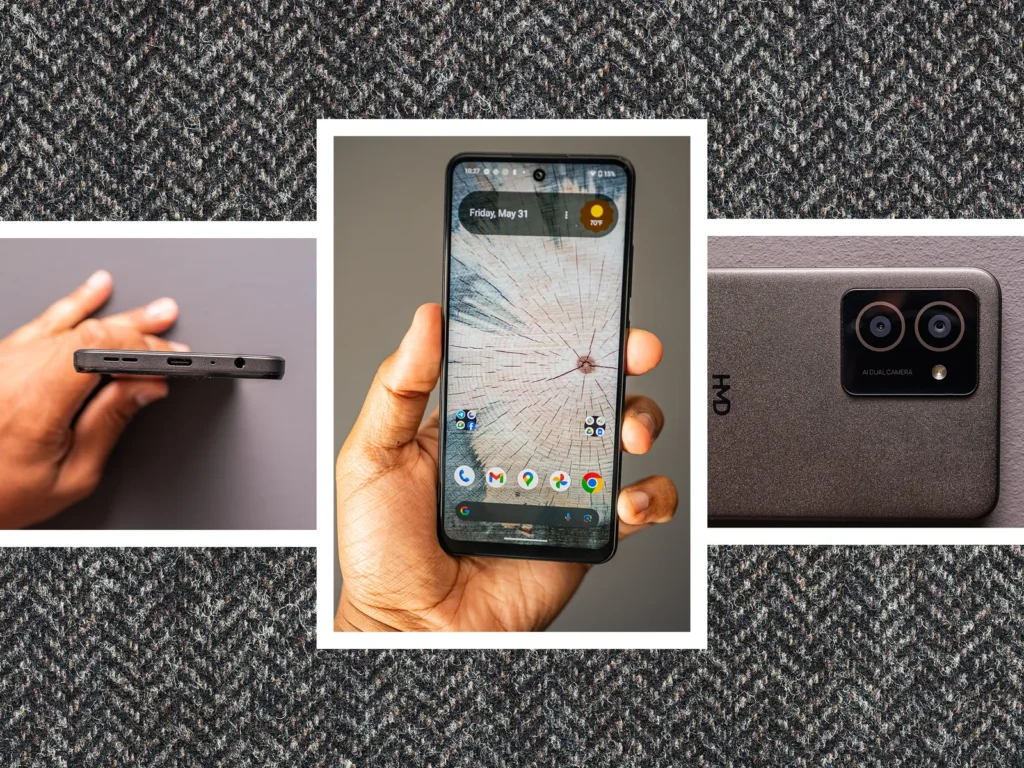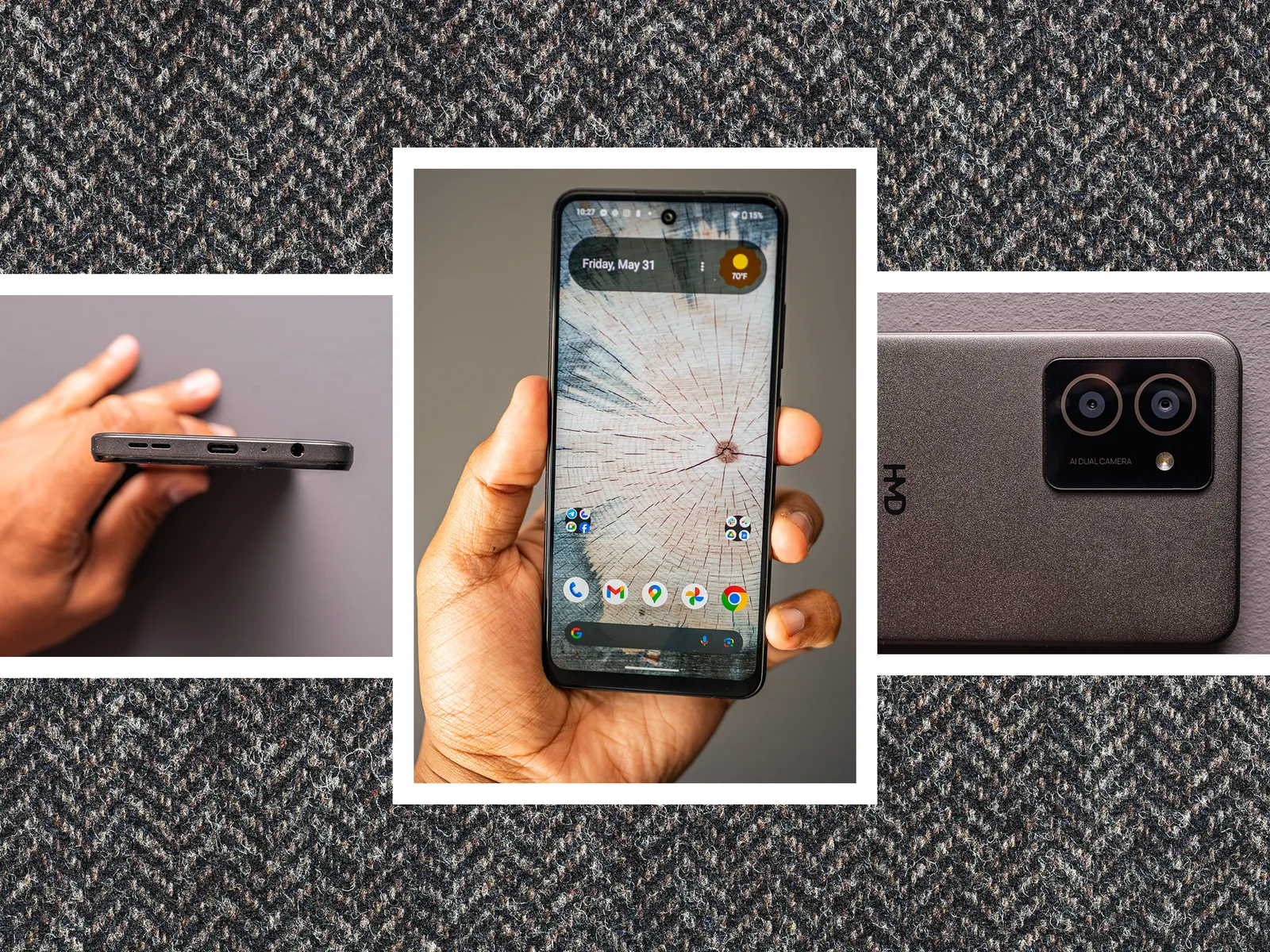HMD Vibe review, budget smartphone 2024, HMD Vibe specs, cheap Android phones, HMD Vibe performance, affordable smartphones, HMD mobile devices, best budget phones, HMD Vibe camera quality, HMD Vibe battery life
Review: HMD Vibe
HMD, the Finnish company known for licensing the Nokia brand to produce budget and midrange Android phones for over seven years, is venturing into the market with its own branding. Their new line of smartphones, branded “HMD” (Human Mobile Devices), marks a significant step as they continue their relationship with Nokia while introducing their unique identity. Among their latest offerings, the HMD Vibe stands out in the US market, priced at $150. But does this budget-friendly phone offer value for money? Let’s dive into its features and performance to find out.

Design and Build Quality
The HMD Vibe sports a minimalistic design that, while not striking, is functional. It features a black rectangular body with a graphite-esque design on the rear, giving it a subtle aesthetic appeal. Despite its budget price, the phone feels sturdy in hand. However, it lacks a fingerprint sensor, a convenience that its competitor, the Moto G Play 2024, offers. Instead, HMD provides a basic face unlock feature, which, unfortunately, doesn’t work in the dark or with sunglasses and is not supported by apps requiring secure login.
The phone includes a headphone jack and a microSD card slot, allowing users to expand the 128 GB of internal storage, a useful feature for those who need more space for apps and media. On the downside, it misses out on a near-field communication (NFC) sensor, which means you can’t use Google Wallet for contactless payments—a feature that some phones in the $200 range offer.
Display and Performance
The HMD Vibe is equipped with a 6.56-inch LCD screen that, while decently sharp, struggles under bright sunlight. This can be a significant drawback for users who spend a lot of time outdoors. The display supports an adaptive refresh rate that can be bumped up to 90 Hz from the default 60 Hz, offering a smoother user experience. However, this setting is not enabled by default, and users need to activate it manually for better performance.
Under the hood, the Vibe is powered by Qualcomm’s Snapdragon 680 chipset, paired with 6 GB of RAM. Initial setup and app installations might feel sluggish, but once the phone is up and running, it provides a fairly smooth experience for its price range. The phone handles day-to-day tasks and light gaming quite well, with benchmark scores comparable to similarly priced models like the Moto G Play 2024.
Software and Updates
HMD Vibe runs on stock Android 14, providing a clean and user-friendly interface. However, the company’s software update policy is disappointing. The Vibe will not receive any Android upgrades—what you buy is what you get. While security updates are promised for two years, this still falls short compared to competitors like Motorola, which offers three years of security updates and at least one OS update. Additionally, the phone comes with a fair amount of preinstalled bloatware, although it is removable.
Battery Life
HMD claims the Vibe offers two days of battery life, but in practical usage, this claim doesn’t hold up. The 4,000-mAh battery can last a full day with moderate usage, but intensive tasks like GPS navigation and music streaming drain it faster. On average, users can expect about four hours of screen-on time. While adequate for a budget phone, it doesn’t live up to the company’s lofty claims.
Camera Performance
The camera setup on the HMD Vibe is perhaps its most significant weakness. It features a 13-MP main rear camera and a 5-MP selfie camera, but the photo quality is subpar. Images taken with the rear camera often appear grainy and lack detail, especially in low-light conditions. Comparatively, photos taken with the Moto G Play are notably better. Selfies suffer from poor color accuracy, often adding an unnatural green tinge to skin tones.
Additional Features and Issues
The phone is only IP52 rated for water resistance, meaning it can withstand light rain but should not be submerged. During testing, several bugs were encountered. The voice typing feature did not work across any apps, the flashlight toggle in the quick settings menu was unresponsive at times, and Google Maps occasionally malfunctioned, requiring a restart. These issues, while not deal-breakers, can be frustrating for daily use.
Conclusion
The HMD Vibe, with its $150 price tag, aims to cater to budget-conscious consumers but falls short in several areas. While it offers decent performance for everyday tasks and a clean Android experience, the lack of software updates, subpar camera quality, and minor bugs detract from its overall appeal. If you need a cheap phone and can live with these limitations, the HMD Vibe is a passable option. However, for a slightly higher price, alternatives like the Moto G Play 2024 provide a better-rounded experience with more reliable features.
Read More-
